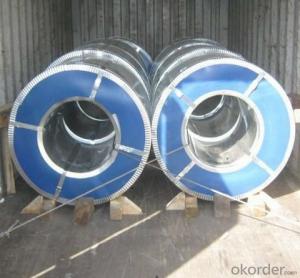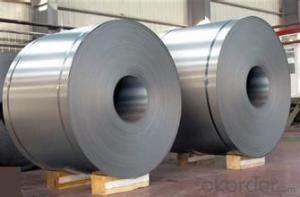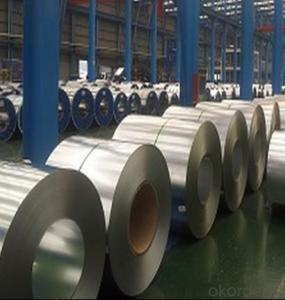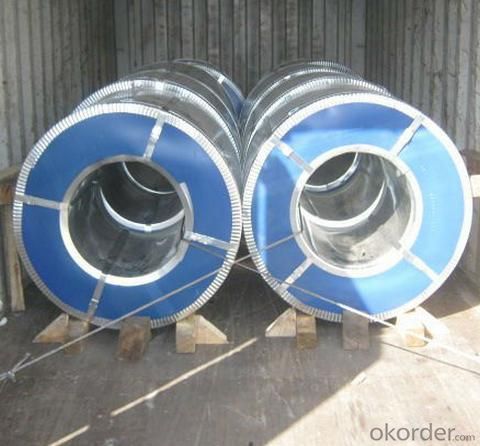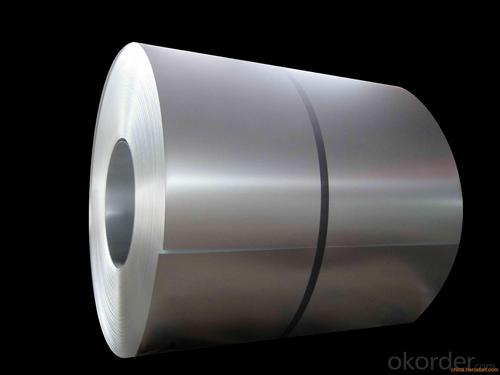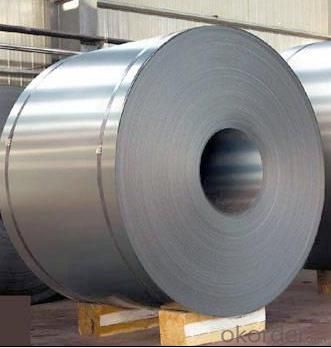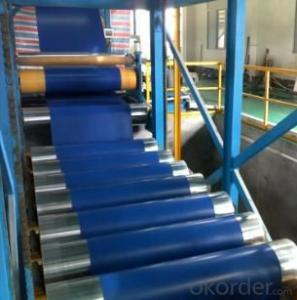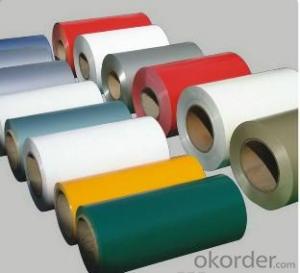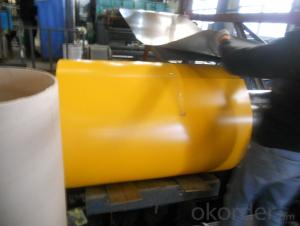Colored Coated Galvalume Steel Coils for Building Material
- Loading Port:
- Shanghai
- Payment Terms:
- TT OR LC
- Min Order Qty:
- 25 m.t.
- Supply Capability:
- 10000 m.t./month
OKorder Service Pledge
OKorder Financial Service
You Might Also Like
| Standard: | AISI,ASTM,GB,JIS | Grade: | CGCC CGCH | Thickness: | 0.17-0.6mm |
| Place of Origin: | China (Mainland) | Brand Name: | Model Number: | GL-001 | |
| Type: | Steel Coil | Technique: | Cold Rolled | Surface Treatment: | Coated |
| Application: | Container Plate | Special Use: | High-strength Steel Plate | Width: | 750-1250mm |
| Length: | C | certificate: | SGS,BV,ISO | usage: | building roofing material |
| coil weight: | 3-7 ton | coil ID: | 508mm | base metal: | hot rolled steel coil |
Packaging & Delivery
| Packaging Detail: | mills standard export seaworthy packing or according to the customers' requirements |
| Delivery Detail: | 30days |
Galvalume Steel Coils/Coil
Product advantages:
A.high strength
B.strong soundess
C.well rainproof performance
D.continuous rolling
E.good corrosion resistance
F.easy to install and remove
Quality guarantee:
our company attaches importance to quality management and assurance,it is equipped with sound testing means and has passed the certification of ISO9001 Quality Management System and SGS,BV verification
Deiverse products
With world high-quality galvanized,aluminum and zinc coated and cold-rolled steel coils as base materials.
- Q: I want to design and fab a steel helmet like that in the latest Batman cartoon movie. Only problem I can foresee is staining the metal red.
- Yes you can, steel is a very storng metal. Source - www.qualitas-steel-doors .uk/
- Q: What are the different types of steel coil storage racks?
- There are several different types of steel coil storage racks, including coil cradles, coil saddles, coil racks, and coil c-hooks. Each type is designed to securely hold and store steel coils of various sizes and weights, providing easy access and efficient storage solutions for industrial facilities.
- Q: Where do I need hot galvanized steel coils and color coated rolls?
- Hot galvanized steel coils and color coated rolls have light, beautiful and good corrosion resistance, and can be directly machinedThe construction industry, shipbuilding, vehicle manufacturing, furniture and electrical industries provide a new type of raw materialThe utility model has the advantages of steel replacing wood, efficient construction, energy saving, pollution prevention and the like.
- Q: How are steel coils coated for added protection?
- Steel coils are coated for added protection using a process called coil coating. This process involves the application of a protective layer onto the surface of the steel coil to enhance its durability and resistance to corrosion. There are various methods used to coat steel coils, but the most common one is the continuous coil coating process. In this process, the steel coil is unwound and cleaned thoroughly to remove any contaminants or impurities from the surface. This ensures proper adhesion of the coating material. Once the steel coil is cleaned, it is then pre-treated to enhance its surface properties. This pre-treatment typically involves applying a chemical solution or a conversion coating to the surface of the coil. The purpose of this step is to create a receptive surface for the coating material and enhance its adhesion. After the pre-treatment, the steel coil is coated with a protective layer. This coating material can be a liquid paint, a powder coating, or sometimes a combination of both. The coating is applied uniformly onto the surface of the coil using various techniques, such as roll coating, spray coating, or electrostatic coating. Once the coating is applied, the steel coil is cured or dried using heat or sometimes ultraviolet light. This curing process ensures that the coating material forms a strong bond with the steel surface and achieves the desired protective properties. The coated steel coil is then inspected for quality control measures, such as thickness, adhesion, and appearance. If it meets the required specifications, it is further processed, which may involve cutting, slitting, or forming into the desired shape or size. Overall, the process of coating steel coils for added protection involves thorough cleaning, pre-treatment, application of a protective coating, curing, and quality control. This ensures that the steel coils possess excellent resistance to corrosion, abrasion, and other environmental factors, making them suitable for a wide range of applications in various industries.
- Q: Hello. No freakin' website has no dam info on what products have carbon steel in them. I know it's in cooking equipment and tools, but what tools?i.e It's in a wrench or strainerSo what products have carbon steel in them?
- 440. 440a. 440c is stainless 420hc is made just for buck knives. aus8 is a stainless steel made In japan. 1095 and 1075 are both high carbon steels 1075 is a little tougher then 1095 but the latter holds a edge better and has been used by Ka-Bar for the army and marine fighting knives since WW2 so 1095 has to be a good steel for the government to use it that long. iv got a 7 inch army 1095 on order know. but there sheaths are made in mexico the knife its self is made in new york
- Q: How to solve steel plate storage
- According to the principle of "first in first out" to carry out the turnover, organize the logistics, reduce the large amount of moving plate, reasonable arrangement, easy to steel coil into the use of state.
- Q: I'm looking for the weight of different types of steel and haven't found anything helpful!!thank you
- of course you couldn't find it, the weigh depends on the size of the piece. What you are looking for, I think, is density. Below are a few tables, there are lots more. .
- Q: How are steel coils used in the production of HVAC ducts?
- Steel coils are used in the production of HVAC ducts as they are rolled into a specific shape and size to form the main body of the duct. The coils are then cut and welded together to create a seamless and durable structure that can withstand the high temperatures and pressures associated with HVAC systems.
- Q: Will hot dip galvanizing affect the properties of the steel
- Steel is heat treated for some applications such as bearings, drill bits and cutting tools. Hot galvanizing occurs at 860F (when zinc is molten). Tool steels are likely to lose temper and hardness at this temperature. Common steels wouldn't be affected.
- Q: In terms of weight to strength titanium is stronger. But is it stronger than mild steel? If it is stronger, how much stronger is it?
- Yes ,i think so. The two most useful properties of the metal form are corrosion resistance, and the highest strength-to-weight ratio of any metal.[4] In its unalloyed condition, titanium is as strong as some steels, but 45% lighter.[5] There are two allotropic forms[6] and five naturally occurring isotopes of this element; 46Ti through 50Ti, with 48Ti being the most abundant (73.8%).[7] Titanium's properties are chemically and physically similar to zirconium.
Send your message to us
Colored Coated Galvalume Steel Coils for Building Material
- Loading Port:
- Shanghai
- Payment Terms:
- TT OR LC
- Min Order Qty:
- 25 m.t.
- Supply Capability:
- 10000 m.t./month
OKorder Service Pledge
OKorder Financial Service
Similar products
Hot products
Hot Searches
Related keywords
